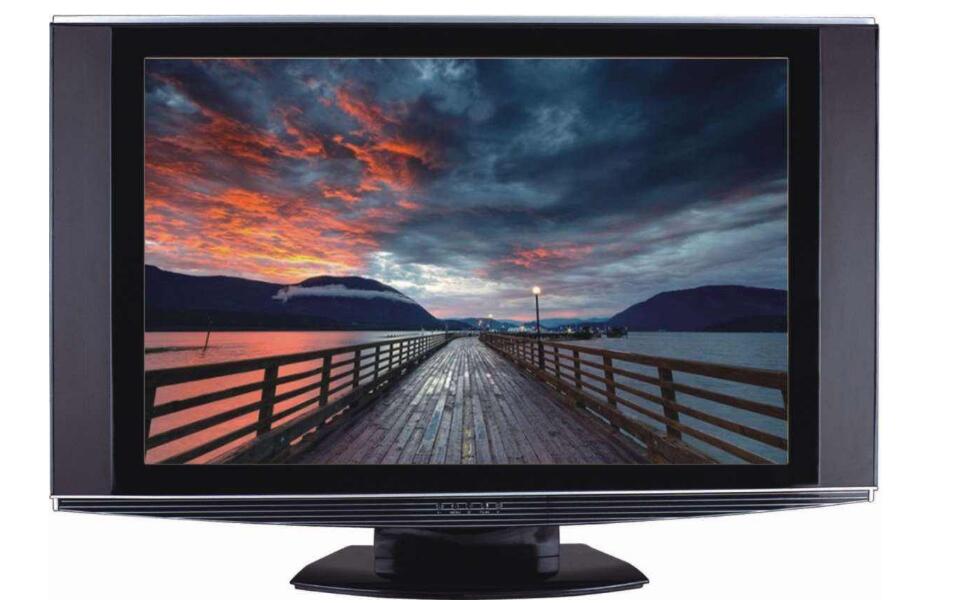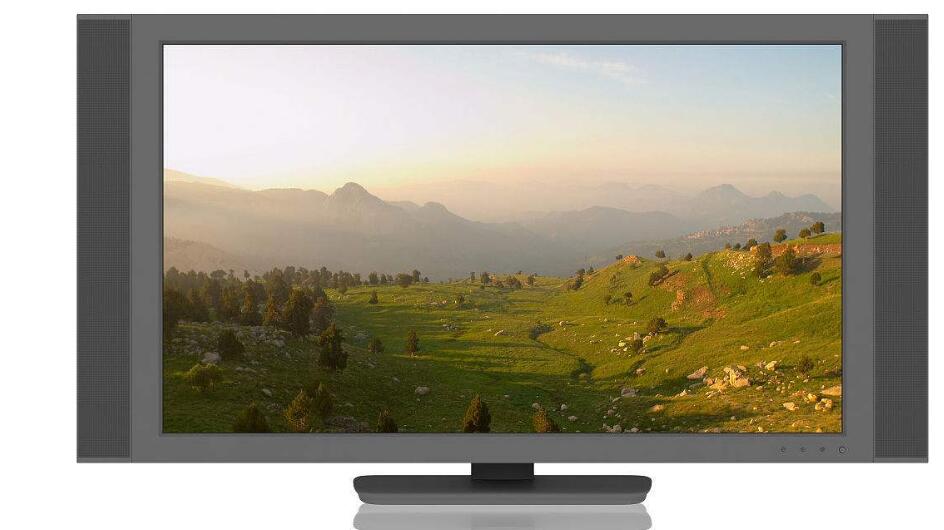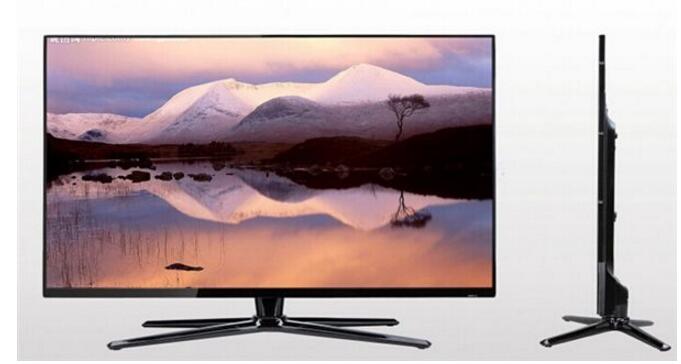What is the difference between plasma TV and LCD TV?
**Overview of Plasma TV**
Plasma TV, also known as Plasma Display Panel (PDP), is a type of television technology that uses a mixture of noble gases sealed between two thin glass panels. When voltage is applied, the gas becomes ionized and excites phosphor coatings to emit light, creating images on the screen. Compared to traditional CRT displays, plasma TVs offer higher resolution, larger screen sizes, thinner profiles, vibrant colors, and rich image detail. In contrast to LCDs, plasma TVs provide better brightness, higher contrast, wider viewing angles, and more vivid color reproduction.
Plasma display technology can be categorized into two main types: DC-type PDP, where electrodes are in direct contact with the gas, and AC-type PDP, where electrodes are covered by a dielectric layer. Color PDPs are further divided into three types: single-substrate (surface discharge) AC PDP, dual (counter-discharge) AC PDP, and pulse storage DC PDP.

**Advantages and Disadvantages of Plasma TV**
1. Excellent color reproduction, producing natural and realistic images.
2. High dynamic range in dark scenes, offering deep image layers.
3. Minimal motion blur, resulting in high-definition motion performance.
4. Wide viewing angle with uniform brightness across the screen.
5. Easy to manufacture large-sized screens.
**Disadvantages:**
1. Limited availability in small sizes.
2. Larger in size, heavier, and consumes more power.
3. Prone to screen burn-in due to high-temperature operation.
4. Lower brightness levels and more visible graininess.
5. Generates significant heat and noise during operation.

**How Plasma TV Works**
The plasma panel consists of two main parts: the front process and the rear process. The front side includes a glass substrate, transparent electrode, bus electrode, and a transparent dielectric layer, along with an MgO film. The rear side contains the phosphor layer, barrier ribs, dielectric layer, address electrode, and another glass substrate. Unlike LCDs, which require a backlight, plasma TVs are self-illuminating because the phosphors are located inside the panel.
During assembly, the front and rear plates must be precisely aligned with the control circuit to ensure accurate illumination. A high-voltage drive system and various control circuits are necessary for the panel to function properly. Most plasma TVs come with a dedicated TV box that handles signal input and tuning functions, making the complete unit consist of both the plasma panel and the TV box.

**Overview of LCD TV**
Liquid Crystal Display (LCD) technology uses liquid crystals—substances that exhibit properties between solid and liquid states. When heated, they become transparent, and when cooled, they form a turbid crystalline structure. These liquid crystals are arranged in a nematic form, resembling tiny matchsticks, and are used to create images on the screen.
In an LCD TV, voltage is applied to the liquid crystal layer between two glass panels. The alignment of the liquid crystal molecules changes in response to the voltage, controlling how much light passes through. The image is formed by the reflection or transmission of external light, rather than by self-emission like in plasma TVs.

LCD Monitor
LCD monitor have a series of significant features. It has clear and delicate image display effects, and high resolution can present rich details and accurate colors. Wide viewing angle, viewing from different angles, minimal distortion of the image, and simultaneous viewing by multiple people does not affect the visual experience. LCD displays usually have a thinner body, a simple and stylish appearance, can save space, and adapt to various placement environments. The response speed continues to improve, reducing the occurrence of image dragging and blurring, especially performing well when watching dynamic images. The energy consumption is relatively low, which not only saves energy and environmental protection, but also reduces usage costs. In addition, it has good working stability, long service life, and can maintain good display performance for a long time.
Desktop Monitor play an important role in many fields. In an office environment, it is a necessary tool to improve work efficiency. Multi screen splicing can simultaneously process multiple documents and data, facilitating complex tasks. For gamers, a high refresh rate and high-resolution desktop display can bring a smoother and more realistic gaming experience. In the field of design, such as graphic design, 3D modeling, etc., professional desktop displays can accurately display colors and details, meeting high-precision creative needs. In financial trading venues, large screen displays can simultaneously display multiple market data, helping traders make timely decisions. In terms of family entertainment, use it to watch movies, follow dramas, and enjoy the visual feast brought by the large screen.
Open Frame Monitor play multiple important roles. In the field of digital advertising, open displays are used to create large outdoor advertising screens, attracting the attention of many passersby through unique splicing methods and high brightness displays. A certain research laboratory adopts an open display, connected to professional image acquisition equipment, to clearly display the details and data changes of microscopic experiments. A creative studio uses open displays to build a multi screen work system, improving design efficiency and creative expression. In the multimedia classrooms of schools, open displays integrate intelligent teaching systems, providing convenience for interactive teaching between teachers and students. The information consultation desk in a certain shopping mall provides customers with accurate navigation and product information through an open display. These cases fully demonstrate the widespread application and powerful functions of open frame monitors.
Touch Screen Monitor have a wide range of applications in various fields. In the field of education, it has become a powerful tool for interactive teaching. Teachers and students can directly write and draw on the screen, enhancing the fun and participation of teaching. In the retail industry, as a self-service ordering system or product query terminal, it facilitates customer operation and improves service efficiency. In medical facilities, doctors can view medical records and fill in diagnostic information through touch displays, achieving paperless office work. In the conference room, the touch screen display supports multiple people to operate simultaneously for scheme discussion and demonstration. In smart homes, it can serve as a control center and easily control various smart devices. In addition, it also plays an important role in industrial control, transportation and other fields.
Medical Monitor play a crucial role in the medical industry. In the diagnostic process, such as X-ray, CT, MRI and other imaging diagnoses, it can accurately present high-resolution medical images, helping doctors accurately detect lesions. In the operating room, it is used to display real-time images of the surgical process, assisting doctors in precise operations. In the ward, as a display terminal for patient information, it facilitates medical staff to understand the patient's condition and treatment plan at any time. In the context of telemedicine, clear display of patient images and data enables experts to perform remote diagnosis and guidance. In medical teaching, vivid display of cases and anatomical images can assist in medical education and training. In addition, in the field of medical research, providing researchers with refined image analysis support.
LCD Monitor,lcd monitor 4k,desktop lcd monitor,touch screen lcd monitor,open lcd monitor,rugged lcd monitor
Shenzhen Hengstar Technology Co., Ltd. , https://www.angeltondal.com